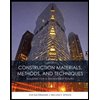Describe about the Stresses Caused by the Soil Mass.
Describe about the Stresses Caused by the Soil Mass.
Stresses in a soil mass are essential for its good performance but can be problematic if they exceed the desirable deformations. Soil is useful to us when it is under stress as when we build dam, building, embankments etc the stresses from these structures is required to be transmitted to the soil mass and this stress called as effective stress which in other words could be defined as the stress that the soil particles feel. Thus, this stress allows the soil to bear loads. Therefore, when the effective stress is near to zero that is a bad condition because that means the soil mass can't bear any load.
But if we put too much load on the soil it can lead to undesirable deformations. Thus, it is important to consider the amount and the types of stresses that we put on the soil.
The stresses in soil can be mainly categorized into two types:
1. Geo-static stresses.
2. Induced stresses.
Geo-static stresses:
Stress due to soil and water weight only. It is the type of stress in which the soil is sitting there beneath the ground surface and its just feeling its own weight. In other words, it is feeling the vertical stress from the soil above it and its feeling the confining stress around it. Meaning before the engineer shows up to the site this stress is existing in the soil.
Induced stresses:
Stress due to construction of fills and foundations. This type of stress is going to come from the engineer. The engineer is going to change the stress that the soil feels and it could come in the form of a new dam, footing, building and all sorts of different loads that the soil beneath that load is now feeling an increase in both vertical and horizontal stresses because of that new load that has been applied.
Step by step
Solved in 3 steps with 3 images


